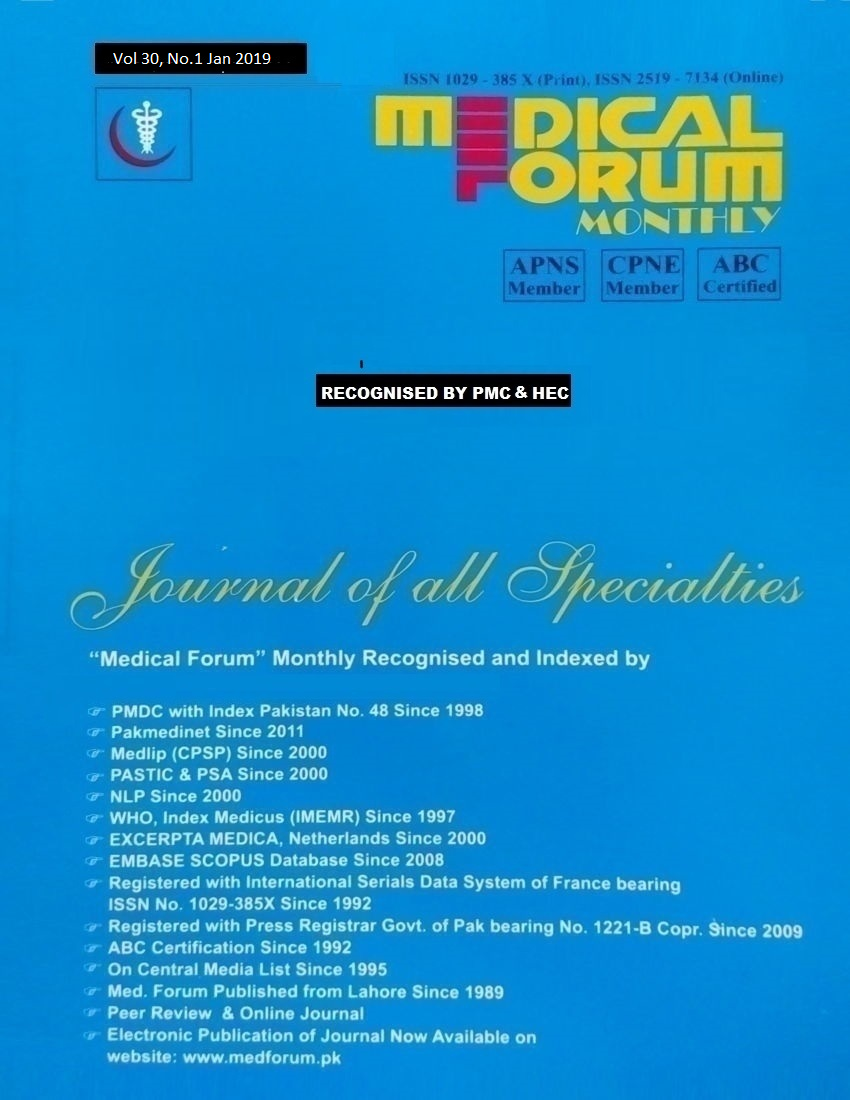
10. Comparison of the Clinical Effectiveness of Azithromycin Versus Ceftriaxone in Treatment of Enteric Fever
Hamidullah1, Sami ul Haq3, Iftikhar Ahmad4 and Sadaqat Ali2
ABSTRACT
Objective: To compare Azithromycin versus Ceftriaxone in terms of mean time taken (in number of days) for defervescencein children with enteric fever.
Study Design: Randomized Controlled Trial study
Place and Duration of Study: This study was conducted at the Department of Paediatrics, Hayatabad Medical Complex, Peshawar from November, 2015 to May, 2016.
Materials and Methods: A total of 140 patients were selected and divided into Group A and Group B by lottery method. Sampling technique was Non probability consecutive sampling. All patients in Group A were treated with oral azithromycin suspension/capsule (10mg/kg/day; maximum dose, 500mg/day) once daily for 7 days and Group B with Intravenous (I/V) Ceftriaxone (75mg/kg/day; maximum dose, 2.5 g/day) twice daily for 10 days.
All medications were administered in the hospital by nursing staff. The Clinical response to the therapy of both drugs were calculated in terms of number of days taken for defervescence. Data were recorded inpredesigned proforma by researcher.
Results: Overall Male to female ratio was 1.61:1. Sexdistribution among the groups was insignificant with p-value=0.366.The overall age of the patients was 5.47 years +2.38SD. Defervescence wise distribution shows that Group A have average defervescence of 4.39days+ 1.12SD while in Group B it was 4.46 days+1.1017SD which wasinsignificant with p-value = 0.693.
Conclusion: Mean defervescence time of azithromycin is better than ceftriaxone in the treatment of enteric fever.
Key Words: Enteric fever, Azithromycin, Ceftriaxone, Defervescence
Citation of articles: Hamidullah, Haq S, Ahmad I, Ali S. Comparison of the Clinical Effectiveness of Azithromycin Versus Ceftriaxone In Treatment of Enteric Fever. Med Forum 2019;20(1):40-44.
